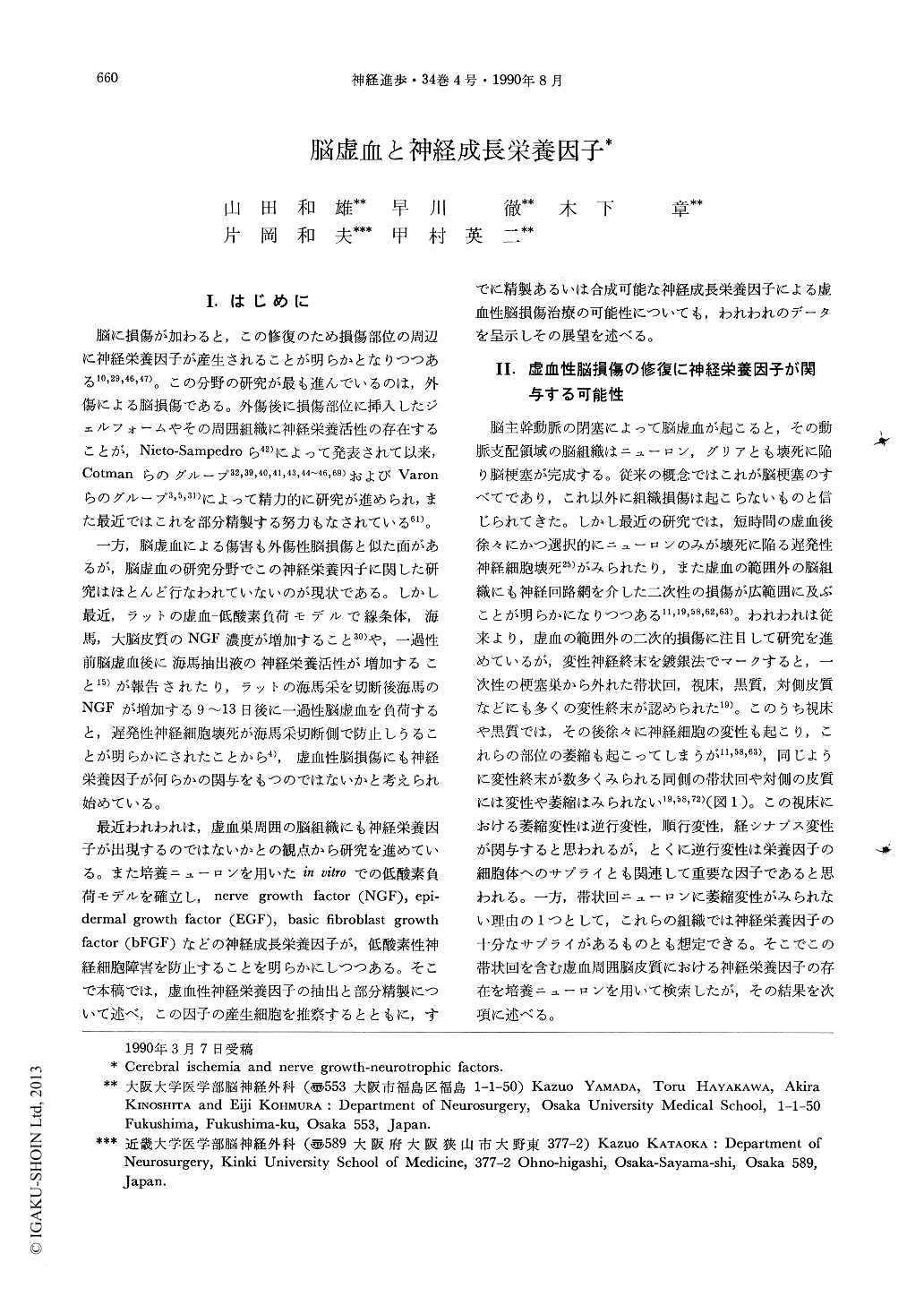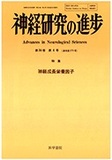Japanese
English
- 有料閲覧
- Abstract 文献概要
- 1ページ目 Look Inside
I.はじめに
脳に損傷が加わると,この修復のため損傷部位の周辺に神経栄養因子が産生されることが明らかとなりつつある10,29,46,47)。この分野の研究が最も進んでいるのは,外傷による脳損傷である。外傷後に損傷部位に挿入したジェルフォームやその周囲組織に神経栄養活性の存在することが,Nieto-Sampedroら42)によって発表されて以来,Cotmanらのグループ32,39,40,41,43,44~46,69)およびVaronらのグループ3,5,31)によって精力的に研究が進められ,また最近ではこれを部分精製する努力もなされている61)。
一方,脳虚血による傷害も外傷性脳損傷と似た面があるが,脳虚血の研究分野でこの神経栄養因子に関した研究はほとんど行なわれていないのが現状である。しかし最近,ラットの虚血―低酸素負荷モデルで線条体,海馬,大脳皮質のNGF濃度が増加すること30)や,一過性前脳虚血後に海馬抽出液の神経栄養活性が増加すること15)が報告されたり,ラットの海馬采を切断後海馬のNGFが増加する9~13日後に一過性脳虚血を負荷すると,遅発性神経細胞壊死が海馬采切断側で防止しうることが明らかにされたことから4),虚血性脳損傷にも神経栄養因子が何らかの関与をもつのではないかと考えられ始めている。
Neurotrophic factors play an important role for development and regeneration of the neurons. Recent studies indicate that tissue content of the nerve growth factor (NGF) increased after transient hypoxia-ischemia, and delayed neuronal death after transient forebrain ischemia was modified by NGF. Recently, we have indicated that neurotrophic activity was present in the extract of periinfarcted cortex, where deafferentation and deefferentation was present. We gel-filtrated the extract and indicated that neurotrophic activity was present in the fractions with molecular weights of 8kD and 22kD.

Copyright © 1990, Igaku-Shoin Ltd. All rights reserved.


